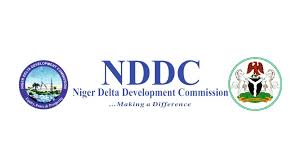The Niger Delta Development Commission (NDDC) has launched the channelization of Kolo Creek, a major waterway serving 17 communities from Okarki-Otuogidi to Ogbia, spanning both Rivers and Bayelsa States. This initiative aims to alleviate severe flooding, improve water flow, and enhance economic activities for communities along the creek.
Speaking at the groundbreaking event in Okarki, Ahoada West Local Government Area, Rivers State, NDDC Managing Director Samuel Ogbuku highlighted the project’s goal to reduce the impact of seasonal flooding, especially in areas along the Ahoada axis of the East-West Road. He also emphasized the added benefits of increased commercial activities, improved aquatic life, and reduced prevalence of waterborne diseases for local residents.
While acknowledging the project’s financial demands, Ogbuku assured the public that it would be completed on schedule, underscoring the NDDC’s commitment to addressing critical infrastructure needs in the Niger Delta. According to Ogbuku, the project responds to urgent appeals from local leaders who raised concerns over creek blockages and the resulting flood risks.
NDDC Executive Director of Projects, Sir Victor Antai, described the channelization as a significant achievement, aligning with President Bola Ahmed Tinubu’s Renewed Hope Agenda by delivering impactful infrastructure improvements. The Traditional Ruler of Okarki, King Elijah Harry Aduan, expressed appreciation to the NDDC, honoring Ogbuku with the chieftaincy title “Itonji Oka-Akie I” (light of the people) for his efforts.
In addition to the channelization project, the NDDC also inspected one of its emergency shelters in Otuokpoti, Bayelsa State. These shelters, designed to provide refuge during flood emergencies, will include essential facilities such as schools, hospitals, police posts, and recreational centers.
Ogbuku confirmed that six such shelters are currently under construction, with two each in Bayelsa, Delta, and Rivers States. Each shelter is designed to accommodate over 1,000 people, providing temporary housing and vital services to affected communities during floods.





